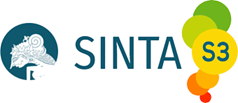Eksplorasi Etnomatematika Makanan Tradisional Rengginang Sebagai Media Belajar Matematika
DOI:
https://doi.org/10.33394/mpm.v13i1.15981Keywords:
Etnomathematics, RengginangAbstract
Ethnomathematics is an approach that connects mathematical concepts with cultural contexts. This study aims to explore the ethnomathematics contained in the process of making traditional rengginang food and how it can be used as an effective medium for learning mathematics. Rengginang, as one of Indonesia's traditional foods, has great potential to be integrated into mathematics learning through a manufacturing process that involves various mathematical concepts. The research method used is qualitative with an ethnographic approach, which includes observation, interviews, and documentation. The results of the study show that each stage in making Rengginang, from soaking sticky rice to frying, contains relevant mathematical concepts, such as number operations, social arithmetic, counting, comparison, geometry and time measurement. This study concludes that the process of making rengginang contains various mathematical concepts that are indirectly applied by the community. This finding shows that mathematical values can be found in traditional cultural practices, proving that ethnomathematics is an effective approach to linking local wisdom and mathematics education. Through an ethnomathematics approach, the tradition of making rengginang can not only be seen as a culture, but also as a learning medium that can help understand mathematics in a more realistic and life-like way
Downloads
Published
2025-06-30
How to Cite
Lestari, D. T., & Rakhmawati, F. (2025). Eksplorasi Etnomatematika Makanan Tradisional Rengginang Sebagai Media Belajar Matematika. Media Pendidikan Matematika, 13(1), 284–297. https://doi.org/10.33394/mpm.v13i1.15981
Issue
Section
Articles
Citation Check
License
Authors who publish with this journal agree to the following terms:
- Authors retain copyright and grant the journal right of first publication with the work simultaneously licensed under a Creative Commons Attribution License that allows others to share the work with an acknowledgement of the work's authorship and initial publication in this journal.
- Authors are able to enter into separate, additional contractual arrangements for the non-exclusive distribution of the journal's published version of the work (e.g., post it to an institutional repository or publish it in a book), with an acknowledgement of its initial publication in this journal.
- Authors are permitted and encouraged to post their work online (e.g., in institutional repositories or on their website) prior to and during the submission process, as it can lead to productive exchanges, as well as earlier and greater citation of published work (See The Effect of Open Access).
Â













